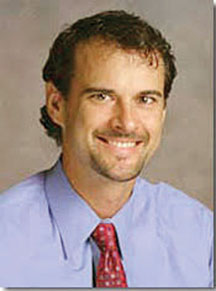Dr. Magryta: Circadian rhythms and gene expression
Published 12:00 am Sunday, August 19, 2018

Dr. Magryta
Circadian clock or rhythm: a 24-hour-based daily cycle of biological activity influenced by external factors like the rising and falling of the sun.
July 2018’s Scientific American has an article that is game changing.
The Clock Within Our Cells, by Veronique Greenwood, is a mind expanding look at how the rise and fall of the sun effects our genes’ expression, and therefore function.
As pediatricians, we have always known that childhood infectious fever curves spike at night, behavior is more ominous in teens when the sun goes down and people wheeze and cough more at night if they have asthma.
That the knowledge of these patterns rarely came with scientific reasoning as to why was unsettling.
Ms. Greenwood recently looked at the literature and found cutting edge research shedding light on this conundrum.
In a 2014 paper by John Hogenesh in the Journal PNAS, he writes, “We generated high-resolution multiorgan expression data showing that nearly half of all genes in the mouse genome oscillate with circadian rhythm* somewhere in the body…. Moreover, we found a majority of best-selling drugs in the United States target circadian gene products. Many of these drugs have relatively short half-lives, and our data predict which may benefit from timed dosing.” (Hogenesh et. al. 2014)
A follow up study published in February 2018 in the Journal Science on this topic by Satchidananda Panda showed that more than 80 percent of our genes follow a circadian pattern. (Panda et. al. 2018)
What they proved was that genes, our blueprint for a cell’s life and function, are put into higher gears to churn out proteins at certain times of day, especially before dawn and dusk.
Let us pause here. What we have is a dynamic mammalian system evolved to up-and-down-regulate any cell’s gene expression based upon the rise and fall of the sun!
In my mind this is almost as earth shattering as the discovery of Dr. Jirtle and the Agouti Mouse’s epigenome regulation of gene silencing. I think about how breast milk changes dynamically all day long, every day while you nurse. Does formula do that? Nope. How our external environment dictates our internal biological function is nothing less than phenomenal.
Her article continues. This is the part that is astounding. Poison or cure?
Dr. Robert Dallmann is a chronopharmacologist, which means he is a doctor that studies the effects of drugs on mammals based on a time clock of 24 hours. His pioneering research published in the Journal of Biological Rhythms in 2014 looked at a mouse model exposed to poisonous doses of acetaminophen based on circadian timing. His research found that when you give large doses of this drug in the morning, nothing bad happens. However, if you repeat this event with the same dose at night, the liver goes into a toxic and damaged state. (Dallmann et. al. 2014)
Again, let us pause here. Hypothetically, if a pregnant mother has a headache or a febrile newborn receives acetaminophen to help relieve a symptom, there could be a circadian timing event that is good or bad.
Not knowing the timing of these chronopharmacological actions is disconcerting. The research is very clear that most of our drugs follow circadian biology. While the animal research was done with high toxic doses, we are generally in the dark about our use of medicine as it relates to safe timing. Does the circadian biology make a drug more toxic at lower doses based on the time of day ingested? It sounds like that could be very true.
Let us take this a bit further. Can you mess up your circadian clock? The answer is a resounding yes. Artificial light, jet lag, shift work, the ubiquitous handheld smartphone, and others are known to disrupt the circadian biology of humans. (Hardie et. al. 2016)
I think about a pregnant mother and also a newborn. How critical does sleeping adequately appear for health? How about a poorly sleeping milk-intolerant newborn? How about the iron deficient teenager with heavy periods? And on and on?
The take-home point is clear for me:
1) Avoid events and activities that jack up your circadian biology. Put your phones on blue light reduced mode. Put them down if possible. Go to bed earlier and rise earlier with the sun.
2) Avoid drugs unless you have no choice when pregnant, as infants and children in general. Ask your doctor if a prescribed drug is necessary for health or a just symptom reducer. A fever less than 106F degrees does not need to be treated unless you have a rare medical indication for treatment. (Schulman et. al. 2015)
Dr. M
Dr. Chris Magryta is a physician at Salisbury Pediatric Associates. Contact him at newsletter@salisburypediatrics.com




